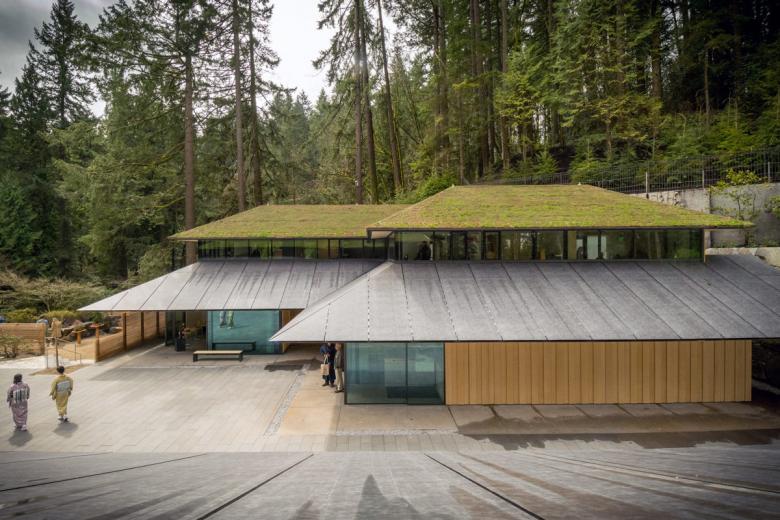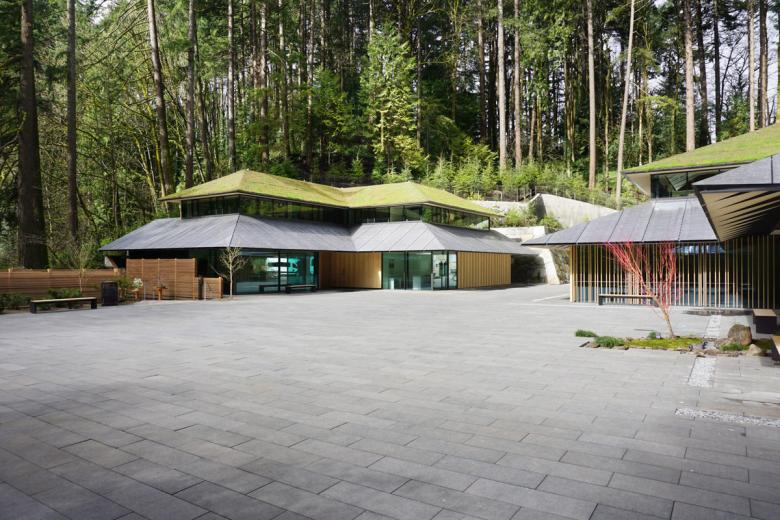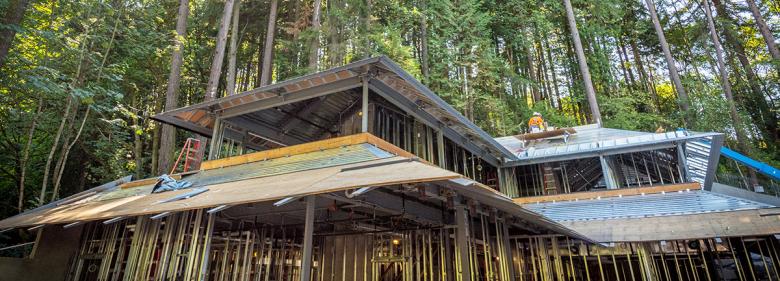Metal 'Stone' Caps Kengo Kuma's Cultural Village
On April 2nd the Portland Japanese Garden opened its $33.5 million Cultural Village expansion designed by Kengo Kuma, the first public commission in the United States by the Japanese architect. Here we discuss the roofs that prominently wrap the village's multiple structures.
Japanese gardens sprang up throughout the American West in the decades following World War II as a means of postwar healing and cultural understanding. Many of them are places of enormous beauty, especially Oregon's Portland Japanese Garden, which quotes Nobuo Matsunaga, the former Ambassador of Japan to the United States, on its website: "[It is] the most beautiful and authentic Japanese garden in the world outside of Japan." Created in the early 1960s by Professor Takuma Tono of Tokyo Agricultural University with five different garden styles on 5.5 acres, the Garden grew over time as it evolved, adding a tea house and gallery to its landscapes. In 2010 Kengo Kuma & Associates won a competition to design three new structures set about a plaza; the Cultural Village, as it's called, adds 3.4 acres to the Garden to bring its current acreage to twelve. The project opened to the public last month with the aim of "existing harmoniously with nature and serving as a mere frame from which to view the exquisite beauty of the surrounding landscape," per the Garden's website.
The Jordan Schnitzer Japanese Arts Learning Center and the Garden House are both two stories tall, consisting of gallery spaces, a classroom, a gift shop, a library, and a space for horticultural workshops. The third structure, the Umani Café, is only one story, but it cantilevers dramatically over the sloping hillside that visitors ascend via stairs to access the raised plaza. Kuma designed each building in a fairly traditional manner, though he did it with modern materials: steel framing, glass curtain walls, and aluminum. The last covers the low-angled roofs of the café and the ground-floor wraparound roofs of the learning center and garden house (grass roofs, explained below, cover the upper roofs above clerestories). PURE + FREEFORM designed and manufactured the metal panels, basing them on a piece of metallic stone that Kuma's office supplied the Minnesota-based company.
To match Kuma's sample, PURE + FREEFORM designed a custom aluminum finish, Celeste Stone. Per a statement from the company, "The surface has silver and white pearlesent ink with matte granite layers on top." Further, "The marine grade aluminum also features a custom 8-coat lumiflon exterior coating, which will allow the color and design to remain unchanged for decades to come." The aluminum panels are only 3mm thick but have the appearance of stone, which, if used, would have been too heavy and thick in achieving the knife-edge overhangs in front of the glass walls. As well, the metal roofs contributed to the project's LEED Gold certification in a number of ways: fabricated in Oregon, they are considered locally sourced; they contain recycled content and are 100% recyclable; and they contain no reportable VOC content. Hence, the panels are as "green" as they are stone-like.





